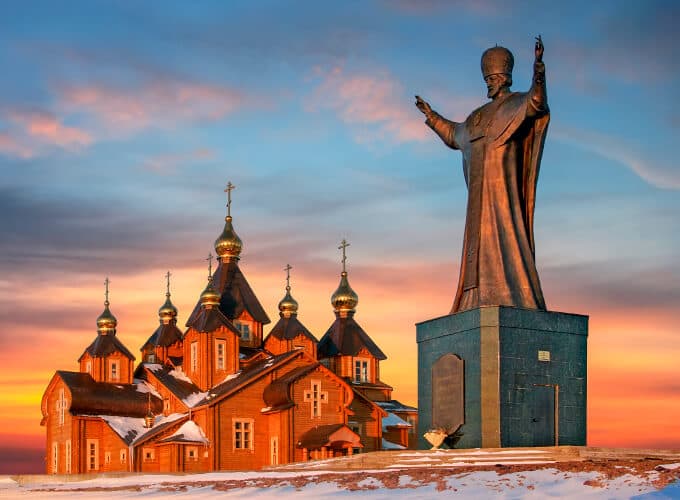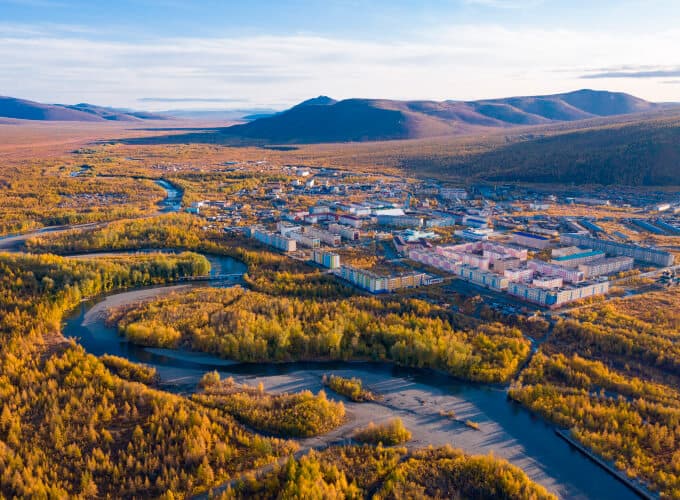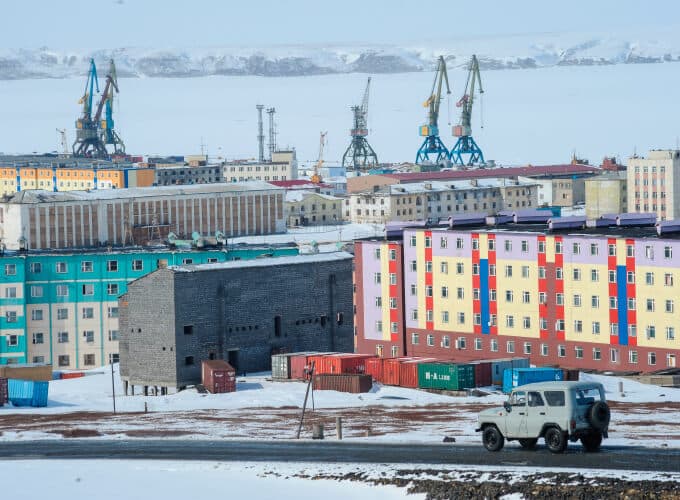The Chukotka Autonomous District is located on the north-eastern tip of Eurasia, between the Arctic and Pacific Oceans, and borders the East Siberian, Chukchi, and Bering Seas.
More than half of its territory lies north of the Arctic Circle and the district is entirely located within Russia’s Arctic zone.
Administrative centre: Anadyr.
Population of the district: approximately 50,000.
Area of the district: 721,500 km2.
Time zone: UTC+12. The Chukotka Autonomous District is 9 hours ahead of Moscow.







